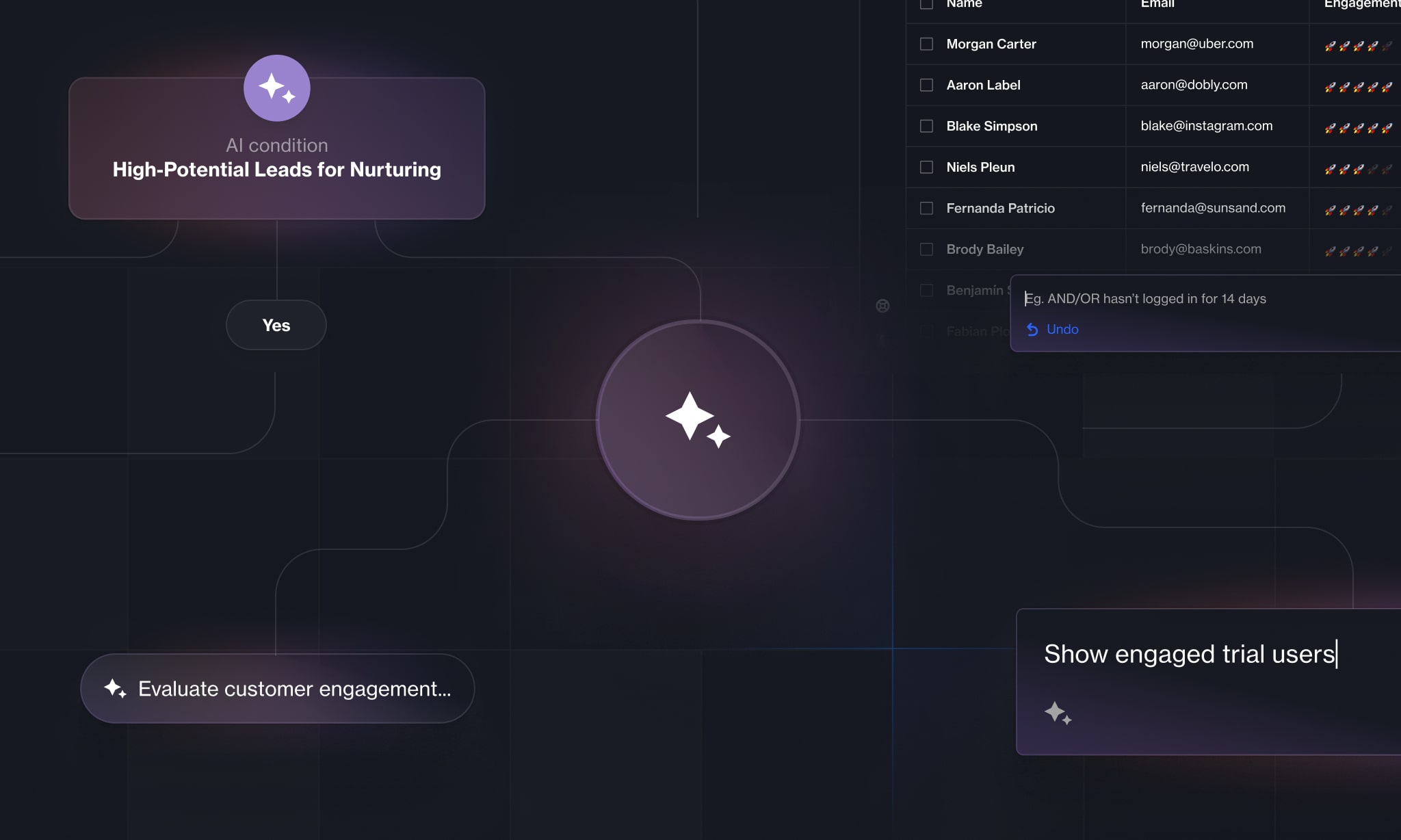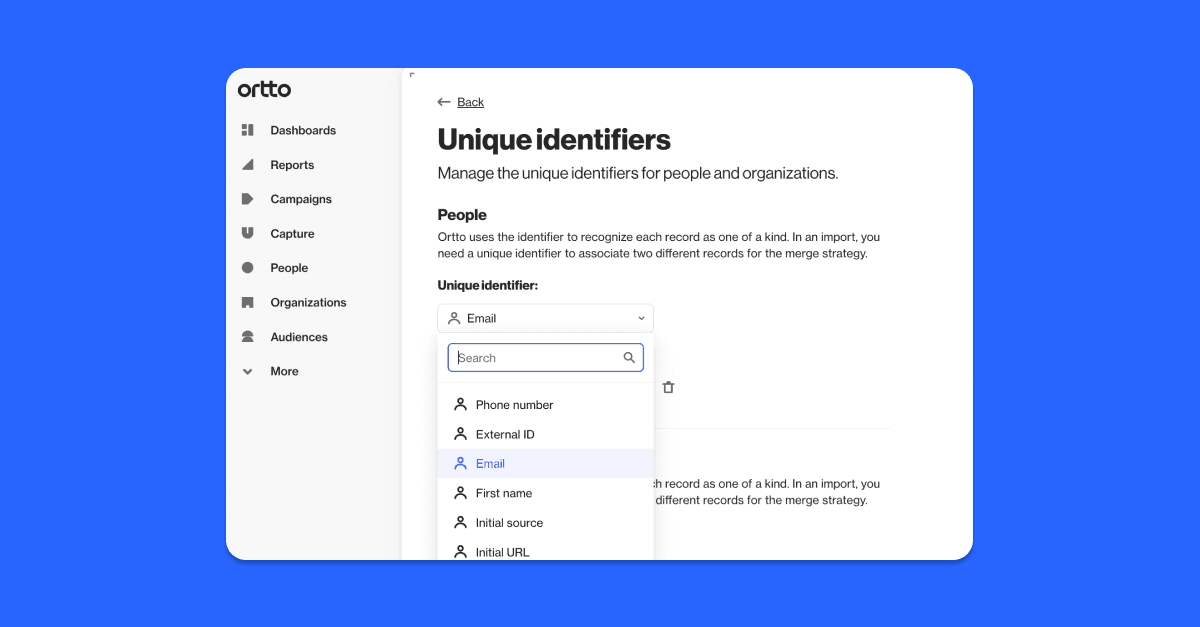Your customers aren’t clones of one another – they have different needs, interests, and experiences with your brand. So why would they respond to the same marketing messages?
Segmenting your audience based on different attributes and behaviors enables you to personalize outreach at scale, and make more impact with your marketing communications so that you can scale your business effectively. In this blog, we'll share some segmentation ideas to get you started.
What is audience segmentation?
Segmentation is the process of organizing your customers into groups based on their demographic, firmographic, behavioral, and transactional data or stage in the customer lifecycle. By creating audience segments, you can send personalized marketing and sales communications, share audiences with ad platforms for retargeting or lookalike targeting, build reports to generate insights about a specific segment, and more.
Building segments requires you to filter your audience. Common filters include:
Demographic: Age, gender, marital status, education, job title, industry, income.
Geographic: Country, state, city, town.
Firmographic (organization): Industry, location, size, structure, performance.
Psychographic: Interests, personality, attitudes, values.
Behavioral: Feature/product use, interests, habits, frequent actions.
Needs-based: Specific needs, product/service requirements.
Technographic: Mobile user, desktop user, app user, software user.
Event-based: Page views, clicks, conversions, downloads, demo requests, product signups, newsletter subscriptions.
Transactional: Economic value on the business.
Stage in the customer lifecycle: Free trail, onboarding, customer, loyal customer
The benefits of segmenting your customers
When leads and customers are expecting a level of personalization, and your business model depends on pushing them down the funnel, segmenting customers aids business growth. For example:
Better understand the health of the business
Draw insights on your ideal customer profile and the customer journey
Personalize content in marketing campaigns
Identify at-risk customers to help prevent churn
Identify loyal customers and advocates
Create more accurate targeting parameters in ad platforms
Increase email deliverability and performance
7 examples of audience segmentation in marketing
The benefits don't end there. Whatever your goal, segmentation can help you achieve them. Here are some examples of how audience segmentation can help you reach a specific business goal:
1. Improve email deliverability by building audience segments for different email lists
When it comes to email marketing, segmenting your audience is best practice. For instance, you should only send your email newsletter to subscribers who have explicitly opted in to receive the messages you’re sending, whether that’s a regular newsletter or information like shipping alerts or renewal reminders. Not only will this improve the open rate and click-through rate, it will also improve email deliverability, meaning your emails are less likely to land in your recipients’ spam folders.
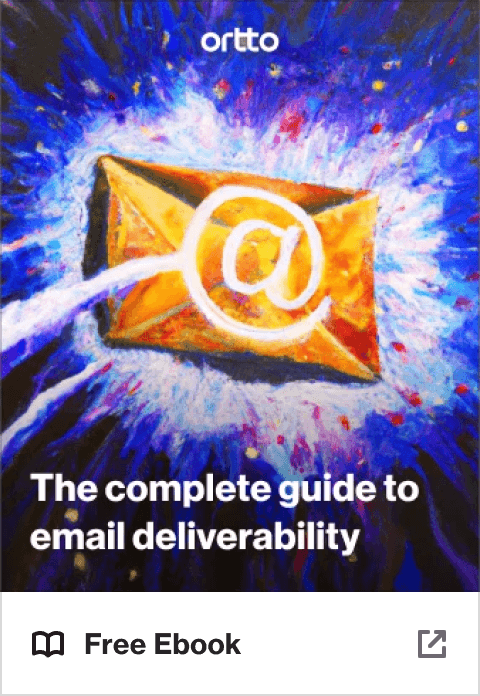
You should also create different audience lists for SMS subscribers — those who have explicitly opted in to receive SMS communications from you — as well as a list of your customers and a list of leads. This way, you can create and distribute content that is relevant to that list.
For example, to your list of leads, you may send middle-of-the-funnel (MOFU) content like educational resources (blog posts, downloadable guides), discounts, webinar/event invites, demos, testimonials, etc., to guide them to conversion. Alternatively, you may send customers information like product feature updates, company news, changes to processes, etc.
2. Increase feature adoption by creating a list of customers who are interested in a new integration or product feature
You can segment your audience to target existing customers who might be interested in participating in a beta program or new feature launch.
For example, if you're launching a new integration with another app, you could use technographic data from surveys, feature requests, and data enrichment platforms like Clearbit to identify a segment of your audience who are already using the other platform. You could then put them in a journey asking whether they want to be part of the beta test.
This would give you a set of beta testers who offer feedback on the integration, and another list of existing customers who did not participate in the beta test but should be targeted with marketing messaging or support outreach when the integration launches.
3. Prevent churn by create segments based on engagement
Filtering and segmenting your audience based on their engagement with your platform or brand is a great way to get a sense of the health of your business, identify at-risk groups of users, and help nudge power users to advocacy.
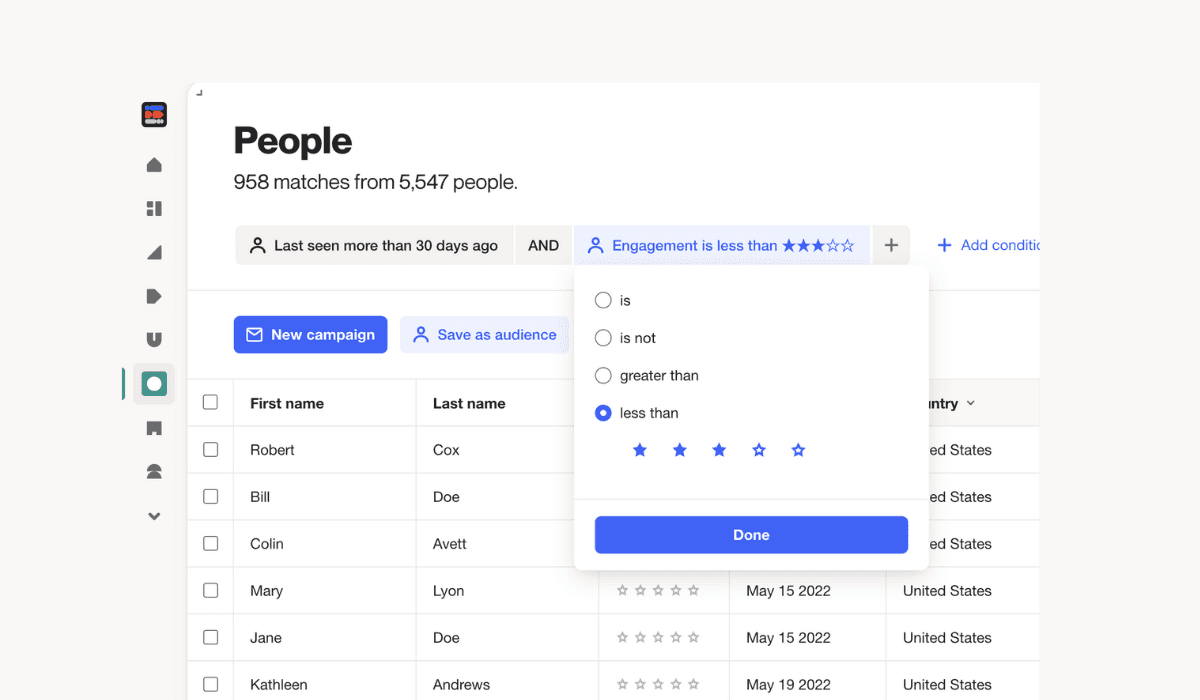
For example, you may use a number of filters including ‘Last seen more than 30 days ago’ and ‘Engagement score of less than 2’ to create an audience of ‘slipping customers’. This audience could be sent into a reengagement journey to help prevent churn.

If you have or create an audience of engaged customers, you can analyze their behaviors to help inform the content, messaging, and calls to action you include in that reengagement journey.
4. Identify your ‘ideal’ customer to target with more accuracy and reduce ad wastage
By creating segments based on monthly recurring revenue (MRR) or customer lifetime value (CLV), you can start to identify common attributes of your top-performing customers to develop an ‘ideal’ buyer persona and create specific campaigns that target lookalike audiences on Facebook.
For example, a not-for-profit could create a segment of their best donors using filters like:
Has donated in the last 90 days
Average donation of $50+
Opened email in the last 30 days
You can then look at this segment to discover:
Campaigns sent
Demographic and geographic information
Time of day emails are opened
Average open rate, click rate, and unsubscribe rate
Activities taken
Over time, this will give you a deeper understanding of what your ideal customers look like. You can also sync this segment to your Meta Business account and target a lookalike audience to increase the quality of your leads.
5. Reactivate customers with timely messages
Custom activites can be created to help you track actions and behaviors that are important to your business, like form fills or partial checkout completes. When you couple this with other customer data, like geographic information, you can send more personalized messages to increase conversions at key moments.
For example, Ortto customer TAXIBOX created a segment of people in Melbourne who had active quotes and sent them an email that confirmed they were still operational and doing 100% contactless interstate moves during lockdown.
“We found 1700 people that had active quotes, and we attributed 10 sales in a single email. It was a 10-15 minute job that generated thousands in revenue of high-value sales. It’s that highly-targeted campaign without the chaos of SQL that we simply couldn’t do with any other tool.” shared Jan Uwland, Head of Marketing.
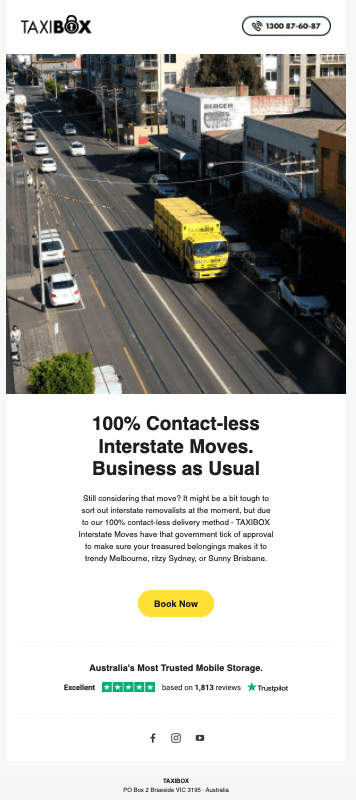
6. Increase B2B email performance by segmenting your audience according to industry
Rather than sending a weekly newsletter to your entire audience, you could segment your audience according to industry and send each segment only content that is relevant to them.
When this dynamic audience is set up as an entry criteria in a journey, you can simply add new content to the end of the journey as its published. This way, each piece of content can build on the last.
By segmenting customers like this and sending them only content that is relevant to their needs, you'll help increase loyalty and position your brand and business as a 'solver'.
7. Report on business health and increase conversions by segmenting leads accoring to funnel stage
Segment leads by their stage of the buying journey can help you to report on volume in each phase and more accurately forecast MRR or new sign ups for the month.
These segments can also be used in lead nurture journeys or playbooks to nudge leads further down the funnel and increase conversions.
Those at the top of the funnel (prospects) should receive content that enhances brand awareness, such as blog posts, podcasts, social media posts, etc.
Middle-of-the-funnel leads are at the evaluation stage and want to see how your product and/or service fixes their problem. Therefore, you should send them educational resources, webinar/event invites, surveys/quizzes, free trials/discounts/offers, etc.
The bottom of the funnel leads are close to converting. Send them content that will help them make an informed purchasing decision: testimonials, case studies, demos, product comparison pages, etc.
Final word
Segmenting your audience helps you scale personalization, generate deeper insights on your customers and the health of your business, and deliver on objectives. The key is working with a customer data platform that allows you to filter and segment easily, so you can create highly-specific segments and target them with the right messaging at the right time.
Author

More by Ellie Wiseman
Ellie Wiseman has no more articles
